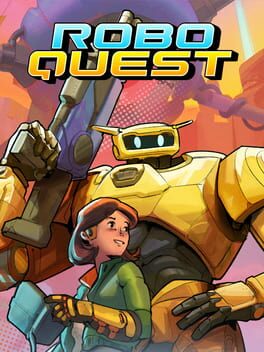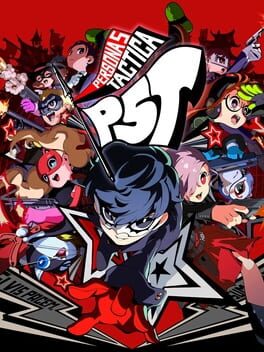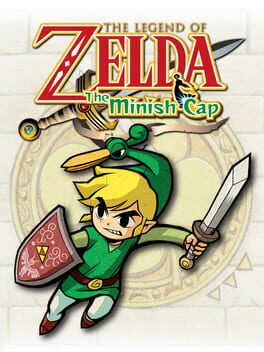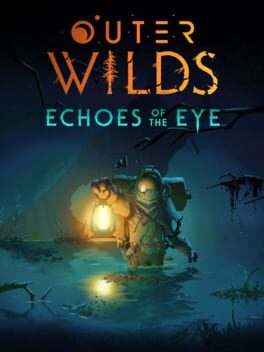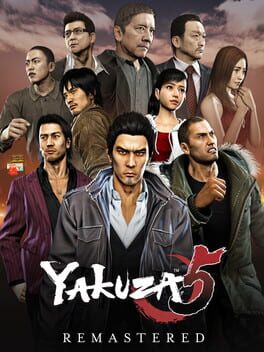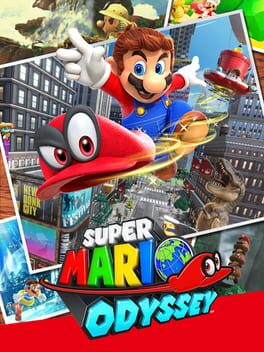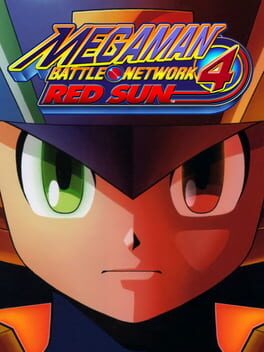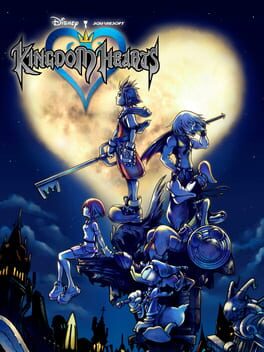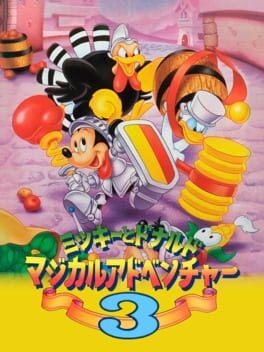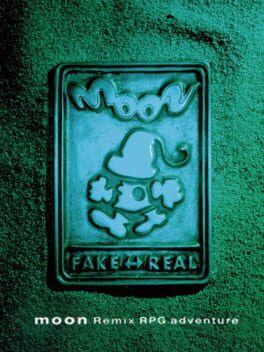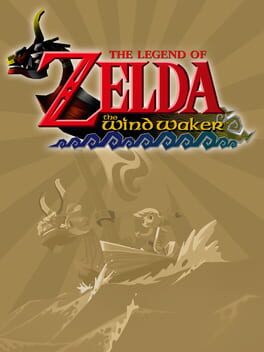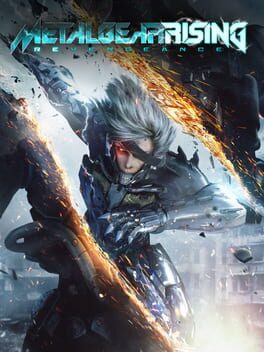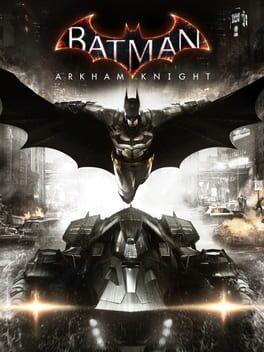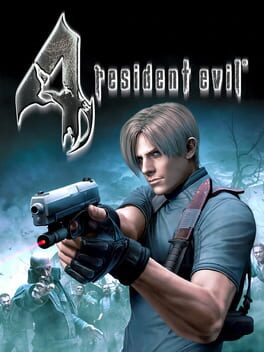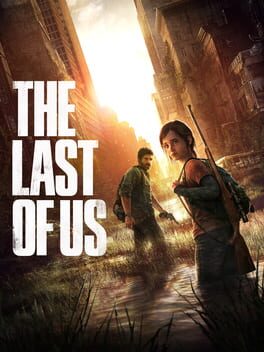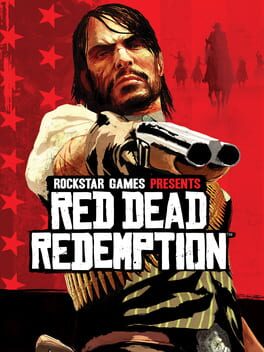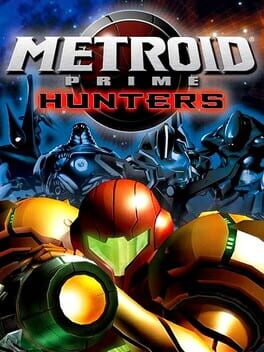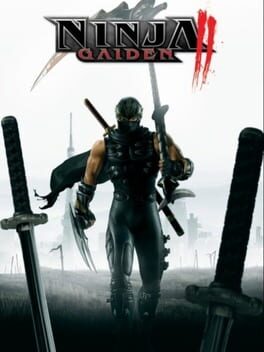TheWhat13
137 reviews liked by TheWhat13
The best 2D Prince of Persia, and it's not close. The franchise’s first entry in roughly 14 years, save for a few mobile titles in between, goes the Metroidvania route. Let me tell you, it does a far better job of it than the previous attempt did. This is also the first installment to really take Warrior Within's concept of giving players a big, interconnected world to explore and fully run with it. The results are absolutely phenomenal.
Mount Qaf is an immediately enchanting place packed with a plethora of different biomes and interior settings, each featuring their own unique quirks such as staircases that change orientation depending on which way you're facing or rivers of poisonous sludge that will have you playing a toxiphobic version of the floor is lava, that I OBSESSED over exploring every inch of with the same verve I do when gradually taking all trailheads at new hiking spots I come across in real life. It's something that I was always rewarded for too in the form of treasures I could use to make myself more powerful, and because of that it is highly recommended you take the time to do so as well.
From platforming challenges that practically demand perfection to borderline Soulsborne caliber boss battles, the map is positively brimming with danger. Often the smartest decision you can make is to regularly hold off on your primary objective to check out all the new side-paths and quests that open up upon receiving the next experience-redefining ability in order to find stuff that will allow you to become stronger. A prospect that's made easier than ever thanks to the game-changing for the genre inclusion of being able to snap a picture of (or just place an icon next to) whatever obstacle or puzzle you don't know how to get past yet on the map to give you a reminder to come back to it later. I'm sure there are those who will take issue with this feature by viewing it as the devs cheapening the adventure by catering to the "casuals," but players are limited in the amount they can place down at one time and it's totally optional whether you use this or not.
There are actually a lot of options that allow you to customize the difficulty to your liking, be it going for a more guided structure with markers pointing you to the subsequent story mission or stripping back any info on where you're supposed to go next entirely to so much else. Everything right down to how tough regular enemies are can be tailored to make the package as accessible, hardcore, or immersive as you want it to be. It's similar to what we saw in Ubisoft's recent Avatar game, and is an approach to how they now design their products that I feel the company isn't being given enough (or truly any) credit for.
You have the same amount of flexibility when it comes to determining your playstyle as well thanks to the amulet system. These upgradable trinkets afford a near RPG level of depth to crafting your own build. I have a buddy who went for a nimble ranged warrior that could slow down time to line up the perfect shot and would punish foes foolish enough to get in close by dealing swift, painful retribution with every dodge. Far cleverer than the almost pure melee tank I opted for with its high damage resistance and output alongside the increased capability to charge special attacks with each sword swipe and well-timed parry, but as a dude who loves to be right up in the action, I wouldn't have traded it for the world.
What makes everything I've just talked about so fantastic is the nigh immaculate core platforming and combat mechanics at the heart of it all. You can clearly see the touches of Super Meat Boy in the former, but the manner in which you'll be regularly required to chain together the various midair dashes, double jumps, and phases through realities without touching the ground undeniably calls to mind the massively underrated Forgotten Sands. The sheer seamlessness with which you can do this on the fly is astounding, removing much of the frustration that would otherwise occur from repeated failures at the especially Herculean sequences you'll encounter. Fights feel mostly fantastic and provide a consistent healthy test of your skills. I had to get used to parrying slightly before when felt most natural due to the physically lengthier triggers on the Xbox controller taking a split second longer to fully pull inwards than PlayStation's or tapping a key on a keyboard in comparison. Also screw the occasional unavoidable boss attack, those flying ghost enemies you can't effectively deal with until the late-game, and the entirety of the brief Raging Sea area. Yet, despite these petty complaints the act of toppling Persia's massive deities and mightiest heroes is so immensely gratifying that my minor quibbles honestly don't matter.
Legitimately the only aspect of The Lost Crown I actively didn't enjoy was the plot. It's not bad, just runs into the same problem as the 2008 reboot where I didn't care enough about anyone onscreen (except Fariba) to become invested in what they were doing in the cutscenes. There's also some weird cultural appropriation thing going on. The main character is sporting the Killmonger haircut, Neith is obviously a black woman, Menolias wouldn't look out of place in Disney's old animated Mulan movie, and Queen Thomyris looks suspiciously Caucasian with that makeup. I get diversity is important, I simply find it weird there are so few people who seriously appear Persian in a game called Prince of Persia. I suppose I shouldn't be too surprised however, since the French have been a little backwards in this department for a minute now (relax, half my DNA is French so I can say that).
It's crazy to think that 2024 has basically just started and we already have an early contender for GOTY. I would recommend this as strongly to those unfamiliar with the genre as I would its seasoned veterans. It made transitioning to a more demanding style of gameplay than I traditionally go for painless to the degree that I went and unlocked every achievement. In the spirit of complete transparency, I will admit that I would have preferred another 3D outing as I would still take the Sands titles over this any day, even the Forgotten one, but if this is the direction they're intent on going you will hear no grumbling from me.
9/10
Mount Qaf is an immediately enchanting place packed with a plethora of different biomes and interior settings, each featuring their own unique quirks such as staircases that change orientation depending on which way you're facing or rivers of poisonous sludge that will have you playing a toxiphobic version of the floor is lava, that I OBSESSED over exploring every inch of with the same verve I do when gradually taking all trailheads at new hiking spots I come across in real life. It's something that I was always rewarded for too in the form of treasures I could use to make myself more powerful, and because of that it is highly recommended you take the time to do so as well.
From platforming challenges that practically demand perfection to borderline Soulsborne caliber boss battles, the map is positively brimming with danger. Often the smartest decision you can make is to regularly hold off on your primary objective to check out all the new side-paths and quests that open up upon receiving the next experience-redefining ability in order to find stuff that will allow you to become stronger. A prospect that's made easier than ever thanks to the game-changing for the genre inclusion of being able to snap a picture of (or just place an icon next to) whatever obstacle or puzzle you don't know how to get past yet on the map to give you a reminder to come back to it later. I'm sure there are those who will take issue with this feature by viewing it as the devs cheapening the adventure by catering to the "casuals," but players are limited in the amount they can place down at one time and it's totally optional whether you use this or not.
There are actually a lot of options that allow you to customize the difficulty to your liking, be it going for a more guided structure with markers pointing you to the subsequent story mission or stripping back any info on where you're supposed to go next entirely to so much else. Everything right down to how tough regular enemies are can be tailored to make the package as accessible, hardcore, or immersive as you want it to be. It's similar to what we saw in Ubisoft's recent Avatar game, and is an approach to how they now design their products that I feel the company isn't being given enough (or truly any) credit for.
You have the same amount of flexibility when it comes to determining your playstyle as well thanks to the amulet system. These upgradable trinkets afford a near RPG level of depth to crafting your own build. I have a buddy who went for a nimble ranged warrior that could slow down time to line up the perfect shot and would punish foes foolish enough to get in close by dealing swift, painful retribution with every dodge. Far cleverer than the almost pure melee tank I opted for with its high damage resistance and output alongside the increased capability to charge special attacks with each sword swipe and well-timed parry, but as a dude who loves to be right up in the action, I wouldn't have traded it for the world.
What makes everything I've just talked about so fantastic is the nigh immaculate core platforming and combat mechanics at the heart of it all. You can clearly see the touches of Super Meat Boy in the former, but the manner in which you'll be regularly required to chain together the various midair dashes, double jumps, and phases through realities without touching the ground undeniably calls to mind the massively underrated Forgotten Sands. The sheer seamlessness with which you can do this on the fly is astounding, removing much of the frustration that would otherwise occur from repeated failures at the especially Herculean sequences you'll encounter. Fights feel mostly fantastic and provide a consistent healthy test of your skills. I had to get used to parrying slightly before when felt most natural due to the physically lengthier triggers on the Xbox controller taking a split second longer to fully pull inwards than PlayStation's or tapping a key on a keyboard in comparison. Also screw the occasional unavoidable boss attack, those flying ghost enemies you can't effectively deal with until the late-game, and the entirety of the brief Raging Sea area. Yet, despite these petty complaints the act of toppling Persia's massive deities and mightiest heroes is so immensely gratifying that my minor quibbles honestly don't matter.
Legitimately the only aspect of The Lost Crown I actively didn't enjoy was the plot. It's not bad, just runs into the same problem as the 2008 reboot where I didn't care enough about anyone onscreen (except Fariba) to become invested in what they were doing in the cutscenes. There's also some weird cultural appropriation thing going on. The main character is sporting the Killmonger haircut, Neith is obviously a black woman, Menolias wouldn't look out of place in Disney's old animated Mulan movie, and Queen Thomyris looks suspiciously Caucasian with that makeup. I get diversity is important, I simply find it weird there are so few people who seriously appear Persian in a game called Prince of Persia. I suppose I shouldn't be too surprised however, since the French have been a little backwards in this department for a minute now (relax, half my DNA is French so I can say that).
It's crazy to think that 2024 has basically just started and we already have an early contender for GOTY. I would recommend this as strongly to those unfamiliar with the genre as I would its seasoned veterans. It made transitioning to a more demanding style of gameplay than I traditionally go for painless to the degree that I went and unlocked every achievement. In the spirit of complete transparency, I will admit that I would have preferred another 3D outing as I would still take the Sands titles over this any day, even the Forgotten one, but if this is the direction they're intent on going you will hear no grumbling from me.
9/10
Yikes?
With a surprise release, The Short Message got a lot of people talking, and understandably so with it being related to Silent Hill. I jumped in with cautious optimism, thank goodness for that. The environments looked great, with the graffiti everywhere and the general atmosphere. The only thing I’d nitpick regarding the visuals was the character HAVING HER HAIR UNDER HER GLASSES? As a spectacled person I found it a bizarre design choice.
As for the meat, gameplay-wise it took a lot from other psychological horror titles with walking around doing very little. Repetitive chase sequences spiced it up a bit, with one chase in particular being a horrid experience. It reminded me of many indie games—unfortunate, yes, but it didn’t do a whole lot to stand out from the crowd and instead relied on the big name attached to it. The narrative on bullying and social media, while prevalent today, was extremely heavy-handed to the point the protagonist was downright unlikeable. Let's face it, depression is common, bullying is common, the pressure of social media is common; it didn't deserve praise for including all those topics in the shallow ways it did. People, real people, actually have nuance and depth.
With a surprise release, The Short Message got a lot of people talking, and understandably so with it being related to Silent Hill. I jumped in with cautious optimism, thank goodness for that. The environments looked great, with the graffiti everywhere and the general atmosphere. The only thing I’d nitpick regarding the visuals was the character HAVING HER HAIR UNDER HER GLASSES? As a spectacled person I found it a bizarre design choice.
As for the meat, gameplay-wise it took a lot from other psychological horror titles with walking around doing very little. Repetitive chase sequences spiced it up a bit, with one chase in particular being a horrid experience. It reminded me of many indie games—unfortunate, yes, but it didn’t do a whole lot to stand out from the crowd and instead relied on the big name attached to it. The narrative on bullying and social media, while prevalent today, was extremely heavy-handed to the point the protagonist was downright unlikeable. Let's face it, depression is common, bullying is common, the pressure of social media is common; it didn't deserve praise for including all those topics in the shallow ways it did. People, real people, actually have nuance and depth.
Nice of them to be constantly throwing the suicide hotline number in your face because wasting time on this will make you want to kill yourself.
Legitimately probably the worst thing I've ever played. Powered through the first 2 chapters then got to the part of chapter 3 where it turns into the Slenderman game and I said fuck it.
The "deep" depressed girl dialogue is unintentionally hilarious with how absolutely stupid it is. The terrible voice acting doesn't help either. Not scary whatsoever, the little bit of gameplay other than walking is abysmal, the story was entirely predictable (in addition to just dumb). Can't believe this game hasn't been given the Forspoken treatment with the dialogue being meme'd to death. Any day now.
Legitimately probably the worst thing I've ever played. Powered through the first 2 chapters then got to the part of chapter 3 where it turns into the Slenderman game and I said fuck it.
The "deep" depressed girl dialogue is unintentionally hilarious with how absolutely stupid it is. The terrible voice acting doesn't help either. Not scary whatsoever, the little bit of gameplay other than walking is abysmal, the story was entirely predictable (in addition to just dumb). Can't believe this game hasn't been given the Forspoken treatment with the dialogue being meme'd to death. Any day now.
The Last Guardian
2016
There seems to be a prevalent expectation that as games evolved, they also became exponentially more approachable. Higher budgets resulted in smoother graphics and fewer bugs. More complex controls (adding left/right triggers, then adding one/two joysticks, then dabbling with motion inputs, etc) gave players a firmer grasp over their characters. AI became more predictable as their algorithms became more intricate to capture a wider range of responses. In a sense, as the technology expanded, the resulting products seemingly became more streamlined to better suit the player’s needs while more thoroughly capturing a developer’s vision.
Team Ico has never been about following tradition, however. If anything, the evolution of their titles embodies the regression of player control, choosing to instead utilize technological advancements not just to refine its premise via "design by subtraction" as chump has pointed out, but to deliver an entirely new experience altogether. Ico was a classic tale of boy meets girl; the girl had to be freed from her cage and pulled around the castle, as the boy protected her against everything in her way to prevent her demise. Shadow of the Colossus, however, was a story concerned with the struggle over control. The lone wanderer, in his quest to revive Mono, hunts down various several-story colossi capable of swatting him about like a fly. In the resulting desperate dance of death, he at first struggles to climb their hulking figures, hanging on for dear life until he discovers their weak points and stabs the colossi while they helplessly flail about. In other words, it's a game about trying to regain any semblance of control until you realize after the fact that the only shadow left was the literal shadow cast by Wander over their fallen corpse.
The Last Guardian then, can be thought of as the natural evolution of Team Ico titles, in that it melds previous design sensibilities and thrives off of disempowering the player throughout its entirety. Trico, the player’s companion and a cross between cat and bird, is essentially the analog to Wander’s horse in Shadow of the Colossus, Agro. Fumito Ueda designed Agro as a companion rather than just a vehicle, and had his team develop specific movement algorithms that would allow Agro to steer herself without the player’s explicit control, forcing players to put their trust in their steed during certain fights emphasizing bow aiming. Ueda and his new team at GenDesign iterated upon this idea, explicitly creating environments where the player was forced to rely upon Trico’s actions to progress and thus establish dependency between the boy and his companion.
While the game can be thought of as an inversion of Ico in this sense, its design influence upon The Last Guardian should not go overlooked, particularly in how the game captures Ico’s physicality. Ico’s key strength was establishing a sense of presence through minimalist puzzles that lacked overly gamey elements, namely in how Ico interacted with his surroundings. Players are subtly guided into climbing chains, pulling levers, sitting on stone sofas to save, and most importantly, holding down R1 to hold Yorda by the hand around the castle and pull her out of danger whenever captured. The Last Guardian innovates upon this by combining several of the traversable elements and the companion into one. To better navigate the vast ruins, the boy must guide Trico and utilize their tall body of climbable feathers in order to scale heights, while occasionally dragging around their large tail and dangling it over ledges to safely climb down. Most importantly, you get to pet Trico whenever you feel like it to comfort your friend in both their happiest and most emotionally taxing moments. In both Ico and The Last Guardian, the player’s constant contact with both the environment and their companion keeps them firmly rooted within its constructed sense of reality by regularly reminding them of their companion’s physical presence.
This physicality would not be as significant without the lessons learned from Shadow of the Colossus however, not just regarding AI behavior but also specifically in how it adapts the game’s sense of scale. Trico is large, and the boy is small. As mentioned previously, Trico can utilize their size to lean against walls and give the boy a step up, but they can also utilize their weight to hold down large chains and swipe away at imposing bodies of armor. Meanwhile, the boy is much more agile and can fit into otherwise inaccessible small spaces by Trico, squeezing through narrow tunnels and gaps in metal gates to pull switches and let his partner through. This obvious difference in size creates consistent room for contrast, not just in how the two characters differ in terms of functionality but also in terms of their scale when measured against the traversed liminal spaces of the ruins, constantly transforming from immense empty rooms to constrained and suffocating tunnels and corridors.
What is particularly interesting is not just The Last Guardian’s disempowerment or sense of scale, but rather what it manages to achieve with said elements and the resulting contrast to establish interdependency between the two characters and solidify their relationship. The combat, an almost complete inverse of Ico’s combat, is the most obvious example. Rather than defending Yorda by whacking shadow enemies with a stick, the roles have been reversed, in that the player must rely upon Trico to guard against scores of possessed armor as to avoid getting kidnapped himself. Even so, the game plays around with this idea of vulnerability, shifting the onus of responsibility about as the boy often finds himself in positions where he must actively support or protect Trico, such as disposing of glass eyes that scare his friend or scrambling to pull a nearby switch to lower a bridge and give Trico room to climb up to safety. The game is even willing to occasionally break its own rules to demonstrate how this sense of caring evolves past its defined guidelines. In almost any other game, this mechanical inconsistency would be regarded as a flaw, but it is this sense of doubt that creates room for the relationship to build from in the first place, and is perhaps the game’s most understated strength.
This is not to say that The Last Guardian was bereft of limitations regarding the execution of its ambitious scope. The most pressing challenge that Ueda and his team faced was how to balance its constructed sense of reality with regards to player expectations; that is, it had to find meaningful ways to commit to its vision of establishing the relationship between the boy and Trico while also acknowledging and appeasing players that would otherwise get lost or frustrated. Perhaps the most obvious downgrade from Ico is the presence of constant button prompts appearing on-screen to alert the players on how to better control the boy and instruct Trico; while the frequency of the prompts lessens over time, it is a slight disappointment that the game doesn’t simply force the players to experiment with inputs and commands as a more subtle and trusting substitute. This downfall however, is an anomaly amongst The Last Guardian’s other shortcomings, as it manages to successfully disguise many of its other concessions and limitations. There’s a classic “escape from the collapsing structure” sequence where all you do is hold forward and jump, but the game gets away with it because the player is used to being framed as a helpless participant. There’s occasional voice-over dialogue hints whenever the player has been stuck for a while in the same area, but it feels far less intrusive than Dormin’s repeated and booming hints in Shadow of the Colossus because the game has already established itself as a retrospective re-telling from the now grown boy’s point of view. Trico doesn’t respond immediately to the boy’s commands when being told where to go, but it makes sense that they wouldn’t function like clockwork and would need time to spot and process the situation from their own point of view, so the lag in response feels justified. It doesn’t matter that certain isolated elements of the game would crumble under scrutiny. What matters is that the situational context to allow players to suspend their disbelief is almost always present; in other words, the illusion holds up.
I’m still learning more about the game to this day. There are so many little details that I wouldn’t have spotted upon a first playthrough, and it’s an absolute joy finally getting to gush upon spotting them in replays. Of course it makes sense that you can’t just issue specific commands to Trico at the very start as a sequence-break despite not being taught by the game; after all, Trico hasn’t had time to observe you and mimic your actions to carry out such commands. Of course the hostile creatures that look exactly like your friend behave similarly; how can you then use your preconceived knowledge of their physiology to aid your friend in a fight against their copycat? I also can’t help but appreciate how GenDesign condensed so much learning within its introduction; in the first ten minutes alone, you’re hinted on how to later deal with the bodies of armor (the magical runes that appear before waking up are the exact same as the runes that appear when grabbed, and are dispelled in the same manner of furiously mashing buttons), you get to figure out how Trico’s eyes change colors depending upon whether they’re mesmerized or hostile, and it quickly establishes the premise of building up trust with a very wary creature that’s more than likely to misunderstand or ignore you at first. Combine all of these nuances with the game’s ability to destabilize and diversify playthroughs via Trico’s innate curiosity and semi-unpredictable instincts, and you get a game that becomes easier to appreciate the more the player familiarizes themselves with its inner workings.
I think a lot of criticism for The Last Guardian ultimately comes down to less of what we perceive the game is and more of what we perceive the game isn’t. It’s not a fully player-controlled puzzle-platforming game like Ico, it’s not a puzzle-combat game with spectacle like Shadow of the Colossus, and it’s certainly not a classic companion escort-quest game where you can just order Trico around like a robot and expect automatic results every time. Instead of focusing on the progression of more complex controls and puzzles, The Last Guardian is focused on the progression of a seemingly more complex relationship. I’m not going to pretend that everyone will get something out of this game, as it definitely requires a good deal of patience and player investment to meet the game halfway. It’s certainly more difficult to appreciate given its lack of influence unlike Ico or its lack of exhilarating boss encounters unlike Shadow of the Colossus. That said, it’s this element of danger in its ability to commit to its vision while alienating impatient players that makes it such a compelling title once it finally clicks. Many before me have pointed out how powerful the bond between the player and Trico felt upon learning from others that improperly caring for Trico results in your companion stubbornly ignoring the player’s commands; after all, volume swells cannot exist without contrast to provide room for growth. Perhaps this is why at the end of the day, I find myself transfixed by every word that Fumito Ueda has to offer. In an era where developers feel overly concerned with the best and brightest, he doesn’t seem concerned about what video games mean so much as what video games are. I can only hope that someday, he and GenDesign will return to bring us a new title that captures our imagination as thoroughly as many of his works already have for me.
Team Ico has never been about following tradition, however. If anything, the evolution of their titles embodies the regression of player control, choosing to instead utilize technological advancements not just to refine its premise via "design by subtraction" as chump has pointed out, but to deliver an entirely new experience altogether. Ico was a classic tale of boy meets girl; the girl had to be freed from her cage and pulled around the castle, as the boy protected her against everything in her way to prevent her demise. Shadow of the Colossus, however, was a story concerned with the struggle over control. The lone wanderer, in his quest to revive Mono, hunts down various several-story colossi capable of swatting him about like a fly. In the resulting desperate dance of death, he at first struggles to climb their hulking figures, hanging on for dear life until he discovers their weak points and stabs the colossi while they helplessly flail about. In other words, it's a game about trying to regain any semblance of control until you realize after the fact that the only shadow left was the literal shadow cast by Wander over their fallen corpse.
The Last Guardian then, can be thought of as the natural evolution of Team Ico titles, in that it melds previous design sensibilities and thrives off of disempowering the player throughout its entirety. Trico, the player’s companion and a cross between cat and bird, is essentially the analog to Wander’s horse in Shadow of the Colossus, Agro. Fumito Ueda designed Agro as a companion rather than just a vehicle, and had his team develop specific movement algorithms that would allow Agro to steer herself without the player’s explicit control, forcing players to put their trust in their steed during certain fights emphasizing bow aiming. Ueda and his new team at GenDesign iterated upon this idea, explicitly creating environments where the player was forced to rely upon Trico’s actions to progress and thus establish dependency between the boy and his companion.
While the game can be thought of as an inversion of Ico in this sense, its design influence upon The Last Guardian should not go overlooked, particularly in how the game captures Ico’s physicality. Ico’s key strength was establishing a sense of presence through minimalist puzzles that lacked overly gamey elements, namely in how Ico interacted with his surroundings. Players are subtly guided into climbing chains, pulling levers, sitting on stone sofas to save, and most importantly, holding down R1 to hold Yorda by the hand around the castle and pull her out of danger whenever captured. The Last Guardian innovates upon this by combining several of the traversable elements and the companion into one. To better navigate the vast ruins, the boy must guide Trico and utilize their tall body of climbable feathers in order to scale heights, while occasionally dragging around their large tail and dangling it over ledges to safely climb down. Most importantly, you get to pet Trico whenever you feel like it to comfort your friend in both their happiest and most emotionally taxing moments. In both Ico and The Last Guardian, the player’s constant contact with both the environment and their companion keeps them firmly rooted within its constructed sense of reality by regularly reminding them of their companion’s physical presence.
This physicality would not be as significant without the lessons learned from Shadow of the Colossus however, not just regarding AI behavior but also specifically in how it adapts the game’s sense of scale. Trico is large, and the boy is small. As mentioned previously, Trico can utilize their size to lean against walls and give the boy a step up, but they can also utilize their weight to hold down large chains and swipe away at imposing bodies of armor. Meanwhile, the boy is much more agile and can fit into otherwise inaccessible small spaces by Trico, squeezing through narrow tunnels and gaps in metal gates to pull switches and let his partner through. This obvious difference in size creates consistent room for contrast, not just in how the two characters differ in terms of functionality but also in terms of their scale when measured against the traversed liminal spaces of the ruins, constantly transforming from immense empty rooms to constrained and suffocating tunnels and corridors.
What is particularly interesting is not just The Last Guardian’s disempowerment or sense of scale, but rather what it manages to achieve with said elements and the resulting contrast to establish interdependency between the two characters and solidify their relationship. The combat, an almost complete inverse of Ico’s combat, is the most obvious example. Rather than defending Yorda by whacking shadow enemies with a stick, the roles have been reversed, in that the player must rely upon Trico to guard against scores of possessed armor as to avoid getting kidnapped himself. Even so, the game plays around with this idea of vulnerability, shifting the onus of responsibility about as the boy often finds himself in positions where he must actively support or protect Trico, such as disposing of glass eyes that scare his friend or scrambling to pull a nearby switch to lower a bridge and give Trico room to climb up to safety. The game is even willing to occasionally break its own rules to demonstrate how this sense of caring evolves past its defined guidelines. In almost any other game, this mechanical inconsistency would be regarded as a flaw, but it is this sense of doubt that creates room for the relationship to build from in the first place, and is perhaps the game’s most understated strength.
This is not to say that The Last Guardian was bereft of limitations regarding the execution of its ambitious scope. The most pressing challenge that Ueda and his team faced was how to balance its constructed sense of reality with regards to player expectations; that is, it had to find meaningful ways to commit to its vision of establishing the relationship between the boy and Trico while also acknowledging and appeasing players that would otherwise get lost or frustrated. Perhaps the most obvious downgrade from Ico is the presence of constant button prompts appearing on-screen to alert the players on how to better control the boy and instruct Trico; while the frequency of the prompts lessens over time, it is a slight disappointment that the game doesn’t simply force the players to experiment with inputs and commands as a more subtle and trusting substitute. This downfall however, is an anomaly amongst The Last Guardian’s other shortcomings, as it manages to successfully disguise many of its other concessions and limitations. There’s a classic “escape from the collapsing structure” sequence where all you do is hold forward and jump, but the game gets away with it because the player is used to being framed as a helpless participant. There’s occasional voice-over dialogue hints whenever the player has been stuck for a while in the same area, but it feels far less intrusive than Dormin’s repeated and booming hints in Shadow of the Colossus because the game has already established itself as a retrospective re-telling from the now grown boy’s point of view. Trico doesn’t respond immediately to the boy’s commands when being told where to go, but it makes sense that they wouldn’t function like clockwork and would need time to spot and process the situation from their own point of view, so the lag in response feels justified. It doesn’t matter that certain isolated elements of the game would crumble under scrutiny. What matters is that the situational context to allow players to suspend their disbelief is almost always present; in other words, the illusion holds up.
I’m still learning more about the game to this day. There are so many little details that I wouldn’t have spotted upon a first playthrough, and it’s an absolute joy finally getting to gush upon spotting them in replays. Of course it makes sense that you can’t just issue specific commands to Trico at the very start as a sequence-break despite not being taught by the game; after all, Trico hasn’t had time to observe you and mimic your actions to carry out such commands. Of course the hostile creatures that look exactly like your friend behave similarly; how can you then use your preconceived knowledge of their physiology to aid your friend in a fight against their copycat? I also can’t help but appreciate how GenDesign condensed so much learning within its introduction; in the first ten minutes alone, you’re hinted on how to later deal with the bodies of armor (the magical runes that appear before waking up are the exact same as the runes that appear when grabbed, and are dispelled in the same manner of furiously mashing buttons), you get to figure out how Trico’s eyes change colors depending upon whether they’re mesmerized or hostile, and it quickly establishes the premise of building up trust with a very wary creature that’s more than likely to misunderstand or ignore you at first. Combine all of these nuances with the game’s ability to destabilize and diversify playthroughs via Trico’s innate curiosity and semi-unpredictable instincts, and you get a game that becomes easier to appreciate the more the player familiarizes themselves with its inner workings.
I think a lot of criticism for The Last Guardian ultimately comes down to less of what we perceive the game is and more of what we perceive the game isn’t. It’s not a fully player-controlled puzzle-platforming game like Ico, it’s not a puzzle-combat game with spectacle like Shadow of the Colossus, and it’s certainly not a classic companion escort-quest game where you can just order Trico around like a robot and expect automatic results every time. Instead of focusing on the progression of more complex controls and puzzles, The Last Guardian is focused on the progression of a seemingly more complex relationship. I’m not going to pretend that everyone will get something out of this game, as it definitely requires a good deal of patience and player investment to meet the game halfway. It’s certainly more difficult to appreciate given its lack of influence unlike Ico or its lack of exhilarating boss encounters unlike Shadow of the Colossus. That said, it’s this element of danger in its ability to commit to its vision while alienating impatient players that makes it such a compelling title once it finally clicks. Many before me have pointed out how powerful the bond between the player and Trico felt upon learning from others that improperly caring for Trico results in your companion stubbornly ignoring the player’s commands; after all, volume swells cannot exist without contrast to provide room for growth. Perhaps this is why at the end of the day, I find myself transfixed by every word that Fumito Ueda has to offer. In an era where developers feel overly concerned with the best and brightest, he doesn’t seem concerned about what video games mean so much as what video games are. I can only hope that someday, he and GenDesign will return to bring us a new title that captures our imagination as thoroughly as many of his works already have for me.
Roboquest
2020
Persona 5 Tactica
2023
"Persona 5 Tactica" is a very strange little game. Strange, but ultimately very interesting, and honestly, pretty fun.
I was a little bit worried about playing this one when I first saw the trailers for it, entirely because I am just not a fan of tactical games like this. I remember trying to play "Mario + Rabbids Kingdom Battle" a while ago and just not getting anything out of it. I also tried playing "XCOM" some time in the past, but it also just didn't really click with me. I think I just don't really vibe with that kind of game genre, I much prefer relying on quick reactions than having to plan out strategies.
And that's why I was so surprised to find myself actually enjoying "Persona 5 Tactica" quite a bit.
I found the combat to be pretty engaging, and while it could be frustrating at times, I still enjoyed playing through it almost the entirety of the time. I ended up enjoying it way more than I was expecting to. I think what makes this game click with me over other tactical games is that it's not really trying to be a great tactical game; its trying to be a great "Persona 5" game. It focuses far more on making the combat feel like "Persona 5"'s combat, emulating the ebbs and flows, and reproducing the same dopamine rush you get from downing enemies or pulling an all-out-attack. The game prioritizes the feeling you get playing "Persona 5" over creating a strong tactical game, and for that, I am thankful for.
However, I have to admit, that this isn't inherently a good thing. I love this direction because I love "Persona 5" and don't really like tactical games; but for people who do like tactical games, I just can't see them getting too much out of this. Aside from a few of the quests and a couple end game missions, I never really found myself having to actually strategize at all. I'd just run around, try to knock a guy down, and then make the biggest triangle I could to pull of an all-out-attack and that was about it. Sure, there might have been a little bit more like using skills to move enemies or taking advantage of special abilities, but for the most part, I rarely felt like I ever had to come up with a plan to get through a level. For me this was great, but if you go into this game with the mindset of a tactical player, you may be disappointed. (I played this game on normal, so maybe this might not be the case on higher difficulties. But it seems like all that changes with difficulty is damage output and health numbers, so I doubt it.)
Outside of the combat, I found myself loving almost everything else about the game. "Persona 5 Royal" is my favorite game ever, so being able to see my favorite characters interact again had me feeling all whimsical. The art design is incredibly cute, and the music is, of course, absolutely phenomenal. The only thing I feel kind of mixed on is the story. Don't get me wrong, it works, but it just feels the least inspired of everything that came out of "Persona 5". It has its moments, but having a fairly predictable story about some government dude dealing with his trauma just isn't all that interesting, especially when you consider they basically already did that in "Persona 5 Strikers". I don't really think its bad, I just don't think its as great as it could be.
And the only other thing I feel mixed on is persona fusions. They work basically the same way that they did in "Persona Q"; instead of having a bunch of personas for the protagonist to shift through, every character is given one extra persona to carry along with their original one. This worked pretty well in "Persona Q" and honestly, it works pretty well here. My problem with this game's persona fusion is that there is just no reason to bother with offensive skills at all. Magic attacks only affect enemies in regards to their movement (they will either be forced to move their space, force them to stay still, reduce their movement next turn, or not allow them to attack next turn), this works great for the game itself, but since everyone already has a magic ability that already does one of these, I never saw a reason to bother giving my characters another one. It's not too much of a problem since it works pretty well for the game itself, but I just found myself using personas for their stat boosts and maybe support skills for the entirety of the game. But again, its not too much of a loss so I can't be too upset by it.
Overall, I like "Persona 5 Tactica" quite a lot for what it is. It gave me an excuse to dive back into my favorite series again and I love it for that. Almost everything clicks pretty well here, and I was pretty prepared to give it and eight out of ten by the end of the third kingdom. However, the final ten levels or so are just....not good. You have to fight every boss in the game again with little to no changes to them, and then you have to fight the final boss which I found to be nothing more than a chore. I might be my least favorite boss in a "Persona" game. These last few levels left such a bad taste in my mouth that I had no choice but to lower my score by a point. Its still a pretty strong game, and one you should certainly play if you love "Persona 5", but it has its fair share of issues, and I can't see people who aren't already "Persona 5" fans getting anything out of this.
I was a little bit worried about playing this one when I first saw the trailers for it, entirely because I am just not a fan of tactical games like this. I remember trying to play "Mario + Rabbids Kingdom Battle" a while ago and just not getting anything out of it. I also tried playing "XCOM" some time in the past, but it also just didn't really click with me. I think I just don't really vibe with that kind of game genre, I much prefer relying on quick reactions than having to plan out strategies.
And that's why I was so surprised to find myself actually enjoying "Persona 5 Tactica" quite a bit.
I found the combat to be pretty engaging, and while it could be frustrating at times, I still enjoyed playing through it almost the entirety of the time. I ended up enjoying it way more than I was expecting to. I think what makes this game click with me over other tactical games is that it's not really trying to be a great tactical game; its trying to be a great "Persona 5" game. It focuses far more on making the combat feel like "Persona 5"'s combat, emulating the ebbs and flows, and reproducing the same dopamine rush you get from downing enemies or pulling an all-out-attack. The game prioritizes the feeling you get playing "Persona 5" over creating a strong tactical game, and for that, I am thankful for.
However, I have to admit, that this isn't inherently a good thing. I love this direction because I love "Persona 5" and don't really like tactical games; but for people who do like tactical games, I just can't see them getting too much out of this. Aside from a few of the quests and a couple end game missions, I never really found myself having to actually strategize at all. I'd just run around, try to knock a guy down, and then make the biggest triangle I could to pull of an all-out-attack and that was about it. Sure, there might have been a little bit more like using skills to move enemies or taking advantage of special abilities, but for the most part, I rarely felt like I ever had to come up with a plan to get through a level. For me this was great, but if you go into this game with the mindset of a tactical player, you may be disappointed. (I played this game on normal, so maybe this might not be the case on higher difficulties. But it seems like all that changes with difficulty is damage output and health numbers, so I doubt it.)
Outside of the combat, I found myself loving almost everything else about the game. "Persona 5 Royal" is my favorite game ever, so being able to see my favorite characters interact again had me feeling all whimsical. The art design is incredibly cute, and the music is, of course, absolutely phenomenal. The only thing I feel kind of mixed on is the story. Don't get me wrong, it works, but it just feels the least inspired of everything that came out of "Persona 5". It has its moments, but having a fairly predictable story about some government dude dealing with his trauma just isn't all that interesting, especially when you consider they basically already did that in "Persona 5 Strikers". I don't really think its bad, I just don't think its as great as it could be.
And the only other thing I feel mixed on is persona fusions. They work basically the same way that they did in "Persona Q"; instead of having a bunch of personas for the protagonist to shift through, every character is given one extra persona to carry along with their original one. This worked pretty well in "Persona Q" and honestly, it works pretty well here. My problem with this game's persona fusion is that there is just no reason to bother with offensive skills at all. Magic attacks only affect enemies in regards to their movement (they will either be forced to move their space, force them to stay still, reduce their movement next turn, or not allow them to attack next turn), this works great for the game itself, but since everyone already has a magic ability that already does one of these, I never saw a reason to bother giving my characters another one. It's not too much of a problem since it works pretty well for the game itself, but I just found myself using personas for their stat boosts and maybe support skills for the entirety of the game. But again, its not too much of a loss so I can't be too upset by it.
Overall, I like "Persona 5 Tactica" quite a lot for what it is. It gave me an excuse to dive back into my favorite series again and I love it for that. Almost everything clicks pretty well here, and I was pretty prepared to give it and eight out of ten by the end of the third kingdom. However, the final ten levels or so are just....not good. You have to fight every boss in the game again with little to no changes to them, and then you have to fight the final boss which I found to be nothing more than a chore. I might be my least favorite boss in a "Persona" game. These last few levels left such a bad taste in my mouth that I had no choice but to lower my score by a point. Its still a pretty strong game, and one you should certainly play if you love "Persona 5", but it has its fair share of issues, and I can't see people who aren't already "Persona 5" fans getting anything out of this.
The following write-up is divided into two parts: a general overview of Echoes of the Eye in relation to Outer Wilds’ base game, and a more spoiler-heavy breakdown of the execution.
Have you ever had that feeling where upon playing through a remake or sequel of a game, you start to question whether or not you liked the original game to begin with?
I’ve been going through this a lot in 2023. Ys: Memories of Celceta comes to mind first; it took me almost an entire year to finally complete it after beating Ys Seven last fall, because despite carrying over the baseline mechanics, the actual pacing of the game felt noticeably different. Then, I went through a similar feeling in the first few hours of Oxenfree II back in October, and despite the similarities to the original, I quickly shelved it and haven't returned since. Finally, this occurred a third time just a few weeks ago with Pokemon Mystery Dungeon: Rescue Team DX, which upon further investigation I found that despite retaining the base structure of the original Blue/Red Rescue team, the remake directly pulled mechanics and inspiration from more recent games in the series, resulting in a system that no longer served its original purpose. Needless to say, it’s a frustrating experience that often required a lot of scrutiny and soul searching to resolve: did the sequels/remakes change mechanics in ways that felt contrary to the spirit of the originals, or have I just been viewing the originals through rose-tinted glasses this whole time?
This brings us to Echoes of the Eye, my fourth example. In its defense, the cards were already stacked against it; practically every friend I’ve talked to has spoken very positively about how Echoes of the Eye serves as an extension of the base Outer Wilds, and how it greatly enriches the lore of its universe, so it’s hard to see even slight deviations as anything less than a disappointment. Perhaps it is also not entirely fair to lump Echoes of the Eye in with standard sequels and remakes, for Mobius Games was careful to market the DLC as an expansion instead of a separate adventure. I get that this sounds like semantics, but I’d argue that this in itself is representative of Echoes of the Eye’s identity within the game’s scope, or rather, its identity crisis as part of the game’s scope.
In theory, Echoes of the Eye needed to provide an expansion to the game without becoming a “mandatory” part of the experience, since it’s paid DLC released two years after the base game. At the same time though, the expansion also had to fulfill the role of providing a different experience from the base game (otherwise why not just release a free content patch?) while concurrently remaining consistent within the game’s lore and at the very least, capturing the spirit of what made Outer Wilds so compelling. Therein lies the dilemma: how do you make a separate expansion that doesn’t force the player to play the base game prior or coerce/spoil the player in their playthrough of the base game afterwards, while thematically capturing the design philosophy of a game that to me, felt complete?
I realize that it is difficult to discuss the topic at hand without at least explaining how the base game plays into this, so here is my brief (and admittingly, watered-down) summary since I sincerely believe that saying any more would lessen the individual experience. Outer Wilds, to me, is a game about pure discovery. It’s about struggling through life and death, time after time, making sense of something that is so much bigger than you to where it is almost unfathomable to conceptualize. At its core, the mechanics seem fairly simple and concrete; you’ve got a base set of tools and controls that never need to evolve, because much of the game is dictated by the individual circumstances around you in exploiting the set rules of the planetary system to progress further. Internalizing Outer Wilds’ baseline structure and governing mechanics and making the connections between discoveries and mysteries is every bit as key as the execution itself, and as a result, what seems to be this astronomical conundrum stemming from this vast universe becomes seemingly more manageable with each new revelation until the player puts all the pieces together to bring the tale to its close.
Unfortunately, this is not how Echoes of the Eye operates whatsoever.
Spoilers for both base Outer Wilds and Echoes of the Eye will be covered beyond this point.
BeachEpisode brings up a fundamental point in their review that I'd like to expand upon: despite separate planets and areas in Outer Wilds operating under different conditions, the universe nevertheless remains mechanically consistent because at their core, the same set of underlying systems and mechanics never changes. For example, once you learn the three rules of quantum mechanics in base Outer Wilds, you can exploit these same rules regardless of what planet you are on to manipulate quantum objects; capturing a moving quantum object with a photograph will always work on said quantum object regardless of what the quantum object is or the system it exists within. As a result, Outer Wilds also has the benefit of not having a set progression path. I like to imagine the game as a vast series of tunnels intersecting one another at various junctions; it’s super easy to jump back and forth between systems at one’s own will with no negative consequences whatsoever, and regardless of the starting point or route taken, anyone can play through the game and discover all of the content, inevitably coming to the same conclusions.
Meanwhile, Echoes of the Eye takes place almost entirely in one location, dubbed “The Stranger.” My best guess is that Mobius Games chose to isolate and contain all of the expansion’s content in one hub as to prevent players from accidentally stumbling upon the DLC’s side story, though it is still theoretically possible to unintentionally discover the strange black void in the sky without ever following the intended path of following radio tower interference to lead into the expansion, much like I did in my own base game playthrough. Already, you can see the conceptual conflicts; the player isn’t going to know that the Stranger is separate from the base game’s ending until they check their ship logs specifically demarcating the DLC from the base game, but the more troubling issue is the artificiality of creating an intended path with only one real trigger/clue for the Stranger. Either way, it puts the presence of the DLC in an awkward place.
Furthermore, centralizing the DLC around one set location makes exploration in the expansion much more deliberate. This doesn’t inherently sound like a negative at first, but again, consider this in relation to the base game. As implied above, one understated strength is that clues are spread across the entire system and can often be linked to other outlying clues in completely different locations, which encourages the player to more thoroughly explore around the planetary system while lessening burnout from getting walled by the same mysteries in certain locations. The player can simply switch tasks yet continually progress despite doing so. What makes this particularly grating when translated to Echoes of the Eye is that despite all the DLC content being present in the Stranger, the game is still completely connected to the base game and thus will always spawn you back at Timber Hearth even if you die/lapse within the DLC. It makes complete sense for the game to utilize Timber Hearth as a respawn in the base game, but it presents a real lack of quality-of-life issue during an Echoes of the Eye run when the player has to fly back to the Stranger over and over again during the beginning of each time loop, making death feel far more punishing.
This disconnect from the main planetary system becomes even more apparent thanks to the game’s baseline mechanics feeling very underutilized in the exploration of the Stranger. For instance, the Signalscope (used to detect radio wave sources) isn’t used a single time. The aforementioned quantum mechanic laws are also absent, most likely because knowledge of such laws would require you to have played the base game. The ship’s log, used for keeping track of rumors and connecting locations, does at least take note of discoveries in the Stranger, but its presence feels minimal because there’s no space travel involved once you’ve docked in the Stranger’s hangar and actively going back to the docked hangar to check rumors in the middle of runs becomes a huge commitment when considering the one-directional flowing river in the way. Even the time loop itself becomes a detriment. In the base game, the time loop simply makes environments different to navigate, rather than strictly more difficult; for example, Brittle Hollow slowly falls apart over time into a black hole, while the Ash and Ember twins swap sand volumes like an hourglass. That’s not really the case for Echoes of the Eye: the main event dictated by the time loop is the destruction of dam causing the river to overflow, which aside from a couple of key differences from extinguishing some campfire flames, mostly just makes the river more difficult to navigate by flooding the environment with stronger currents.
Here's where another key wrinkle comes into play: the player is unable to translate the alien language of the Stranger’s inhabitants (for reasons I can’t completely explain due to excess spoilers but thematically fit into the series’ lore), and as such, most of the Stranger’s narrative is told via slides that are manually viewed from a projector. I have mixed feelings here. On one hand, the art is beautifully drawn to quickly explain concepts and lore. On the other hand, this is indicative of Echoes of the Eye’s progression feeling fairly linear; the loop then becomes exploring around areas to find reels that hint you upon how to explore other areas for more reels, and instead of making the discoveries for yourself, the gameplay becomes an elaborate exercise of just following illustrated instructions really well. At least the base game left plenty of ambiguity from other forms of given context clues (such as Nomai translations and character dialogue) creating vague hints of what to follow up upon, but the reels often quite literally display exact solutions of what to do in particular scenarios (i.e. look in this direction during this specific part of the raft path to teleport to a new area), which can leave players feeling like they didn’t need to do much extrapolating and thus rob them of the thrill of discovery. Again, this isn’t necessary a pressing issue in isolation, but when compared to the open-ended problems that the base game loved to present, Echoes of the Eye’s reels leave something to be desired.
And then, there’s the dream world, which basically exacerbates every issue I’ve described above and adds some more to boot. The separate areas of the dream world eschew many of the governing laws that dictate the base game and the Stranger’s overworlds (so you won’t be able to use your jetpack/flashlight/scout launcher/etc), and instead force the player to adhere to exclusive mechanics present only in the dream world, such as the teleporting hands and the wooden totems that can extinguish/illuminate distant light sources. Much of these areas are enveloped in this blanketing darkness where you can’t see more than a few feet in front of you, unless you make the conscious decision to focus your lantern’s light and slow your movement to a crawl. Navigation of these areas is annoying enough as is, but they become even more troublesome thanks to these roaming owls that upon spotting you in the light, will immediately dash towards you and extinguish your lantern, waking you up and forcing another reentry with more backtracking. Oddly, while the slide reels at least give you the hint on where to go for objectives, they don’t give context regarding the owls, which means that avoiding detection more or less comes down to memorizing their routes via trial and error and shutting off your lantern so you can tip-toe around them in total darkness. At that point, the forced stealth-horror sections fail to spark any enthusiasm; the in-your-face scary monsters aren’t scary anymore when you’re just getting caught over and over trying to sneak past, and the learning curve feels far more punishing than difficult thanks to the time loop cutting your experimentation short before you’ve got to redo the whole shebang and reacquire the lantern/get back to the campfire entry to try again.
I’ve been fairly critical of Echoes of the Eye so far, but I can at least concede that within the DLC, the mechanics feel internally consistent and serve their situations well. The light/dark mechanics used to steer the raft, open doors, and display reels capture the expansion’s theme really well and match the player’s expectations (i.e. you’re shining your flashlight onto poles on the raft to steer, and it makes sense that you’d want to steer in the direction you’re looking in), which led to one particular light puzzle utilizing the scout launcher that I really appreciated. Exploration feels a bit tempered, partially because of the reels often spelling too much out and partially because using the jetpack feels risky when the flowing current can send you careening down the river, but at least the player usually isn’t lost or confused despite often not having the ship’s log within reach.
Sadly, I find it difficult to extend that same courtesy to the dream world. Aside from the tedious forced-stealth, some of the puzzles feel outright unintuitive, while others feel undercooked. For instance, one area requires you to tail hostile owls to figure out the location of a hidden stairway into an archive. However, the game has been instinctively signaling to you this entire time that the owls should be avoided entirely, especially when they can quickly spot and hunt you down as soon as they notice your light source. Why then, does the game expect you to completely invert this learning for one particular puzzle? Similarly, there are several instances in another area where the player is expected to walk between seeming gaps in mid-air using candles to mark invisible bridges. It’s not until you’ve accessed the area’s vault that you find out that those invisible bridges can be spotted all along by placing your lantern on the floor and walking a certain distance away to “reveal” the simulation and display the invisible bridges. Again, it’s a cool concept, but certainly it would have made more sense to learn the exploit before the puzzles instead of presenting it in a reel afterwards like some sort of revelation that’s not quite as useful anymore.
Many of the game’s discrepancies troubled me greatly at this time, so I decided to hunt down a primary source to better understand what was going through the dev team’s minds after completing the game a few hours later. It should then come as no surprise that many of the differences between Outer Wilds and Echoes of the Eye are a result of the DLC requiring a different design philosophy out of necessity because the base game already existed. Co-designer Alex Beachum describes Echoes of the Eye’s design philosophy in an interview as essentially the reverse approach to base Outer Wilds. While Outer Wilds was designed with story organically arising from gameplay possibilities, Echoes of the Eye had to implement the gameplay with preestablished premises in mind, building locations around the story. This then, explains the rigidity of the game’s overworld progress in phases (find the Stranger -> explore around the river -> explore the dream world -> solve the case) and hints towards why the designers settled upon reels as the solution for explaining lore and guiding players towards the intended routes of discovery.
There’s also evidence which suggests that scope creep was a pressing concern during Echoes of the Eye's development. Beachum mentions during that same interview that there were originally three worlds to be designed within the Stranger: a light world, a dark world, and a dream/simulated world. Originally, the pitch was that the Stranger was to operate on a day-night cycle, and that the big twist was that the light and dark world were really two sides of the same coin, using an elevator to flip you to the other side. The dream world essentially existed as a “matrix” where the ghosts manifesting in the overworld were plugged in. Eventually, this idea had to be greatly simplified when the designers realized it was far too much work to implement all three worlds at once. Nevertheless, it’s an interesting thought experiment considering how these three worlds would operate differently, and perhaps the distinct mechanics present in the dream world would not feel nearly as jarring if it operated as a transition world between the light and dark environments.
Finally, the interview confirmed that as a result of the game’s linearity, the development team had to deliberately scale back certain elements that they feared would lead to accidental findings outright skipping entire sections of the game. Essentially, the designers believed it made no intentional sense for the civilization to store away the “answers” to the security system. Instead, they hoped to make the final revelations of exploiting glitches in the system feel like deliberately timed discoveries. For example, Mobius Games increased the steepness of the angle at which the player has to tilt their camera to place down the lantern, so accidentally finding out about the virtual world from walking away from the lantern became much more difficult.
That more than anything, illustrates what I think is the main point of friction between the base game and Echoes of the Eye. Despite having strict solutions per hand-crafted puzzle, Outer Wilds felt like a game firmly within the player’s control thanks to its open-ended structure. By no means was it focused upon emergent gameplay, but the ability to turn accidental discoveries into tangible threads was nevertheless greatly appreciated and really made me feel like I was doing the brunt of the work. Echoes of the Eye on the other hand, is a game that had to be much more carefully scripted as to not take away from both its internal runtime and the larger overall mystery from which it stemmed from. The fact that Mobius Games had to intentionally limit the available possibilities by removing utility and filled up much of its planned runtime with forced stealth that felt like banging my head against the wall speaks to a much more visible artificiality (quite literally, in this case) present within the deliberately constrained and separated areas of the DLC.
The conclusion at least, brings Echoes of the Eye down to earth. After exploiting the simulation with the glitches that you learned about in the dream world vaults, you finally get to meet the lone survivor and learn more about what happened from their perspective. It’s a shame that the exploits are used exactly once and all at once instead of incrementally throughout explorations of the virtual world, but I can respect an ending that quickly comes to a natural close and serves as a succinct foil to the much more illustrious finale of the base game. The story is not quite complete yet though, because then it becomes time to share your side as the prisoner hands over the vision staff. It would not be an exaggeration to claim that this moment is perhaps the most satisfying catharsis in the entire game’s runtime. Such a simple act as becoming the storyteller yourself, coupled with the developer’s care to alter the specific pictured events depending on what your character has witnessed in the base game prior to opening the vault, really brings the whole piece together. I may have my gripes with the expansion’s conceptualization with respect to the base game, but I am certainly glad that it ended on such a memorable final message that only serves to bolster the sum of its parts.
All things considered, I think that Echoes of the Eye could have been a damn good game if it was entirely self-contained. I did feel that the light-dark mechanics were thoroughly explored within the scope of its environments, and if the game were uncoupled from the base game as to provide simple quality of life updates like a spawn point within the Stranger or a portable version of the ship-log to access at any time, I think the expansion would have been far less frustrating. Hell, if the time loop was removed entirely and I had more time to thoroughly explore the dream world without time constraints, I could definitely see myself attempting to patiently manipulate the AI for a more tense experience rather than simply bum-rushing each forced stealth section. In isolation, I think Echoes of the Eye’s mechanics and overall message are mostly thematically consistent and sound.
Major spoilers end here.
At the end of the day though, that’s exactly the core problem. Outer Wilds is a game about connection. It’s about making sense of subtle clues here and there and linking all the details together to process this overwhelming sensation of confronting something that’s so much more than you could have ever imagined. Echoes of the Eye is supposed to be an expansion that doesn't require prior knowledge of Outer Wilds, yet this linkage to the base game is both its greatest strength and its greatest weakness. Without the base game as a reference point, its final message would not have such lasting impact, but as a result of being an expansion, it’s forever stuck playing second fiddle to something that was already so conceptually realized while feeling drastically different from its already established conventions.
Echoes of the Eye is the best DLC that never needed to exist. That’s simultaneously a knock on the DLC and praise for Outer Wilds itself, as it’s quite difficult to evaluate Echoes of the Eye on its own merits for better or for worse. Perhaps it could have been something more if it didn’t need to live in the shadow of something greater, but what purpose would it have served otherwise? It’s hard to think of any obvious and practical improvements when it feels like conceptually, Mobius Digital may have written themselves into a corner. I'm relieved that my love for the original game was not unfounded, though it's still a bummer at the end of the day that its artistic vision didn't translate too well into its expansion. As such, while I’m glad to have experienced Echoes of the Eye, I’m just as glad to have finally made some sense of this all and have seen this behemoth of modern indie games to its natural conclusion.
Have you ever had that feeling where upon playing through a remake or sequel of a game, you start to question whether or not you liked the original game to begin with?
I’ve been going through this a lot in 2023. Ys: Memories of Celceta comes to mind first; it took me almost an entire year to finally complete it after beating Ys Seven last fall, because despite carrying over the baseline mechanics, the actual pacing of the game felt noticeably different. Then, I went through a similar feeling in the first few hours of Oxenfree II back in October, and despite the similarities to the original, I quickly shelved it and haven't returned since. Finally, this occurred a third time just a few weeks ago with Pokemon Mystery Dungeon: Rescue Team DX, which upon further investigation I found that despite retaining the base structure of the original Blue/Red Rescue team, the remake directly pulled mechanics and inspiration from more recent games in the series, resulting in a system that no longer served its original purpose. Needless to say, it’s a frustrating experience that often required a lot of scrutiny and soul searching to resolve: did the sequels/remakes change mechanics in ways that felt contrary to the spirit of the originals, or have I just been viewing the originals through rose-tinted glasses this whole time?
This brings us to Echoes of the Eye, my fourth example. In its defense, the cards were already stacked against it; practically every friend I’ve talked to has spoken very positively about how Echoes of the Eye serves as an extension of the base Outer Wilds, and how it greatly enriches the lore of its universe, so it’s hard to see even slight deviations as anything less than a disappointment. Perhaps it is also not entirely fair to lump Echoes of the Eye in with standard sequels and remakes, for Mobius Games was careful to market the DLC as an expansion instead of a separate adventure. I get that this sounds like semantics, but I’d argue that this in itself is representative of Echoes of the Eye’s identity within the game’s scope, or rather, its identity crisis as part of the game’s scope.
In theory, Echoes of the Eye needed to provide an expansion to the game without becoming a “mandatory” part of the experience, since it’s paid DLC released two years after the base game. At the same time though, the expansion also had to fulfill the role of providing a different experience from the base game (otherwise why not just release a free content patch?) while concurrently remaining consistent within the game’s lore and at the very least, capturing the spirit of what made Outer Wilds so compelling. Therein lies the dilemma: how do you make a separate expansion that doesn’t force the player to play the base game prior or coerce/spoil the player in their playthrough of the base game afterwards, while thematically capturing the design philosophy of a game that to me, felt complete?
I realize that it is difficult to discuss the topic at hand without at least explaining how the base game plays into this, so here is my brief (and admittingly, watered-down) summary since I sincerely believe that saying any more would lessen the individual experience. Outer Wilds, to me, is a game about pure discovery. It’s about struggling through life and death, time after time, making sense of something that is so much bigger than you to where it is almost unfathomable to conceptualize. At its core, the mechanics seem fairly simple and concrete; you’ve got a base set of tools and controls that never need to evolve, because much of the game is dictated by the individual circumstances around you in exploiting the set rules of the planetary system to progress further. Internalizing Outer Wilds’ baseline structure and governing mechanics and making the connections between discoveries and mysteries is every bit as key as the execution itself, and as a result, what seems to be this astronomical conundrum stemming from this vast universe becomes seemingly more manageable with each new revelation until the player puts all the pieces together to bring the tale to its close.
Unfortunately, this is not how Echoes of the Eye operates whatsoever.
Spoilers for both base Outer Wilds and Echoes of the Eye will be covered beyond this point.
BeachEpisode brings up a fundamental point in their review that I'd like to expand upon: despite separate planets and areas in Outer Wilds operating under different conditions, the universe nevertheless remains mechanically consistent because at their core, the same set of underlying systems and mechanics never changes. For example, once you learn the three rules of quantum mechanics in base Outer Wilds, you can exploit these same rules regardless of what planet you are on to manipulate quantum objects; capturing a moving quantum object with a photograph will always work on said quantum object regardless of what the quantum object is or the system it exists within. As a result, Outer Wilds also has the benefit of not having a set progression path. I like to imagine the game as a vast series of tunnels intersecting one another at various junctions; it’s super easy to jump back and forth between systems at one’s own will with no negative consequences whatsoever, and regardless of the starting point or route taken, anyone can play through the game and discover all of the content, inevitably coming to the same conclusions.
Meanwhile, Echoes of the Eye takes place almost entirely in one location, dubbed “The Stranger.” My best guess is that Mobius Games chose to isolate and contain all of the expansion’s content in one hub as to prevent players from accidentally stumbling upon the DLC’s side story, though it is still theoretically possible to unintentionally discover the strange black void in the sky without ever following the intended path of following radio tower interference to lead into the expansion, much like I did in my own base game playthrough. Already, you can see the conceptual conflicts; the player isn’t going to know that the Stranger is separate from the base game’s ending until they check their ship logs specifically demarcating the DLC from the base game, but the more troubling issue is the artificiality of creating an intended path with only one real trigger/clue for the Stranger. Either way, it puts the presence of the DLC in an awkward place.
Furthermore, centralizing the DLC around one set location makes exploration in the expansion much more deliberate. This doesn’t inherently sound like a negative at first, but again, consider this in relation to the base game. As implied above, one understated strength is that clues are spread across the entire system and can often be linked to other outlying clues in completely different locations, which encourages the player to more thoroughly explore around the planetary system while lessening burnout from getting walled by the same mysteries in certain locations. The player can simply switch tasks yet continually progress despite doing so. What makes this particularly grating when translated to Echoes of the Eye is that despite all the DLC content being present in the Stranger, the game is still completely connected to the base game and thus will always spawn you back at Timber Hearth even if you die/lapse within the DLC. It makes complete sense for the game to utilize Timber Hearth as a respawn in the base game, but it presents a real lack of quality-of-life issue during an Echoes of the Eye run when the player has to fly back to the Stranger over and over again during the beginning of each time loop, making death feel far more punishing.
This disconnect from the main planetary system becomes even more apparent thanks to the game’s baseline mechanics feeling very underutilized in the exploration of the Stranger. For instance, the Signalscope (used to detect radio wave sources) isn’t used a single time. The aforementioned quantum mechanic laws are also absent, most likely because knowledge of such laws would require you to have played the base game. The ship’s log, used for keeping track of rumors and connecting locations, does at least take note of discoveries in the Stranger, but its presence feels minimal because there’s no space travel involved once you’ve docked in the Stranger’s hangar and actively going back to the docked hangar to check rumors in the middle of runs becomes a huge commitment when considering the one-directional flowing river in the way. Even the time loop itself becomes a detriment. In the base game, the time loop simply makes environments different to navigate, rather than strictly more difficult; for example, Brittle Hollow slowly falls apart over time into a black hole, while the Ash and Ember twins swap sand volumes like an hourglass. That’s not really the case for Echoes of the Eye: the main event dictated by the time loop is the destruction of dam causing the river to overflow, which aside from a couple of key differences from extinguishing some campfire flames, mostly just makes the river more difficult to navigate by flooding the environment with stronger currents.
Here's where another key wrinkle comes into play: the player is unable to translate the alien language of the Stranger’s inhabitants (for reasons I can’t completely explain due to excess spoilers but thematically fit into the series’ lore), and as such, most of the Stranger’s narrative is told via slides that are manually viewed from a projector. I have mixed feelings here. On one hand, the art is beautifully drawn to quickly explain concepts and lore. On the other hand, this is indicative of Echoes of the Eye’s progression feeling fairly linear; the loop then becomes exploring around areas to find reels that hint you upon how to explore other areas for more reels, and instead of making the discoveries for yourself, the gameplay becomes an elaborate exercise of just following illustrated instructions really well. At least the base game left plenty of ambiguity from other forms of given context clues (such as Nomai translations and character dialogue) creating vague hints of what to follow up upon, but the reels often quite literally display exact solutions of what to do in particular scenarios (i.e. look in this direction during this specific part of the raft path to teleport to a new area), which can leave players feeling like they didn’t need to do much extrapolating and thus rob them of the thrill of discovery. Again, this isn’t necessary a pressing issue in isolation, but when compared to the open-ended problems that the base game loved to present, Echoes of the Eye’s reels leave something to be desired.
And then, there’s the dream world, which basically exacerbates every issue I’ve described above and adds some more to boot. The separate areas of the dream world eschew many of the governing laws that dictate the base game and the Stranger’s overworlds (so you won’t be able to use your jetpack/flashlight/scout launcher/etc), and instead force the player to adhere to exclusive mechanics present only in the dream world, such as the teleporting hands and the wooden totems that can extinguish/illuminate distant light sources. Much of these areas are enveloped in this blanketing darkness where you can’t see more than a few feet in front of you, unless you make the conscious decision to focus your lantern’s light and slow your movement to a crawl. Navigation of these areas is annoying enough as is, but they become even more troublesome thanks to these roaming owls that upon spotting you in the light, will immediately dash towards you and extinguish your lantern, waking you up and forcing another reentry with more backtracking. Oddly, while the slide reels at least give you the hint on where to go for objectives, they don’t give context regarding the owls, which means that avoiding detection more or less comes down to memorizing their routes via trial and error and shutting off your lantern so you can tip-toe around them in total darkness. At that point, the forced stealth-horror sections fail to spark any enthusiasm; the in-your-face scary monsters aren’t scary anymore when you’re just getting caught over and over trying to sneak past, and the learning curve feels far more punishing than difficult thanks to the time loop cutting your experimentation short before you’ve got to redo the whole shebang and reacquire the lantern/get back to the campfire entry to try again.
I’ve been fairly critical of Echoes of the Eye so far, but I can at least concede that within the DLC, the mechanics feel internally consistent and serve their situations well. The light/dark mechanics used to steer the raft, open doors, and display reels capture the expansion’s theme really well and match the player’s expectations (i.e. you’re shining your flashlight onto poles on the raft to steer, and it makes sense that you’d want to steer in the direction you’re looking in), which led to one particular light puzzle utilizing the scout launcher that I really appreciated. Exploration feels a bit tempered, partially because of the reels often spelling too much out and partially because using the jetpack feels risky when the flowing current can send you careening down the river, but at least the player usually isn’t lost or confused despite often not having the ship’s log within reach.
Sadly, I find it difficult to extend that same courtesy to the dream world. Aside from the tedious forced-stealth, some of the puzzles feel outright unintuitive, while others feel undercooked. For instance, one area requires you to tail hostile owls to figure out the location of a hidden stairway into an archive. However, the game has been instinctively signaling to you this entire time that the owls should be avoided entirely, especially when they can quickly spot and hunt you down as soon as they notice your light source. Why then, does the game expect you to completely invert this learning for one particular puzzle? Similarly, there are several instances in another area where the player is expected to walk between seeming gaps in mid-air using candles to mark invisible bridges. It’s not until you’ve accessed the area’s vault that you find out that those invisible bridges can be spotted all along by placing your lantern on the floor and walking a certain distance away to “reveal” the simulation and display the invisible bridges. Again, it’s a cool concept, but certainly it would have made more sense to learn the exploit before the puzzles instead of presenting it in a reel afterwards like some sort of revelation that’s not quite as useful anymore.
Many of the game’s discrepancies troubled me greatly at this time, so I decided to hunt down a primary source to better understand what was going through the dev team’s minds after completing the game a few hours later. It should then come as no surprise that many of the differences between Outer Wilds and Echoes of the Eye are a result of the DLC requiring a different design philosophy out of necessity because the base game already existed. Co-designer Alex Beachum describes Echoes of the Eye’s design philosophy in an interview as essentially the reverse approach to base Outer Wilds. While Outer Wilds was designed with story organically arising from gameplay possibilities, Echoes of the Eye had to implement the gameplay with preestablished premises in mind, building locations around the story. This then, explains the rigidity of the game’s overworld progress in phases (find the Stranger -> explore around the river -> explore the dream world -> solve the case) and hints towards why the designers settled upon reels as the solution for explaining lore and guiding players towards the intended routes of discovery.
There’s also evidence which suggests that scope creep was a pressing concern during Echoes of the Eye's development. Beachum mentions during that same interview that there were originally three worlds to be designed within the Stranger: a light world, a dark world, and a dream/simulated world. Originally, the pitch was that the Stranger was to operate on a day-night cycle, and that the big twist was that the light and dark world were really two sides of the same coin, using an elevator to flip you to the other side. The dream world essentially existed as a “matrix” where the ghosts manifesting in the overworld were plugged in. Eventually, this idea had to be greatly simplified when the designers realized it was far too much work to implement all three worlds at once. Nevertheless, it’s an interesting thought experiment considering how these three worlds would operate differently, and perhaps the distinct mechanics present in the dream world would not feel nearly as jarring if it operated as a transition world between the light and dark environments.
Finally, the interview confirmed that as a result of the game’s linearity, the development team had to deliberately scale back certain elements that they feared would lead to accidental findings outright skipping entire sections of the game. Essentially, the designers believed it made no intentional sense for the civilization to store away the “answers” to the security system. Instead, they hoped to make the final revelations of exploiting glitches in the system feel like deliberately timed discoveries. For example, Mobius Games increased the steepness of the angle at which the player has to tilt their camera to place down the lantern, so accidentally finding out about the virtual world from walking away from the lantern became much more difficult.
That more than anything, illustrates what I think is the main point of friction between the base game and Echoes of the Eye. Despite having strict solutions per hand-crafted puzzle, Outer Wilds felt like a game firmly within the player’s control thanks to its open-ended structure. By no means was it focused upon emergent gameplay, but the ability to turn accidental discoveries into tangible threads was nevertheless greatly appreciated and really made me feel like I was doing the brunt of the work. Echoes of the Eye on the other hand, is a game that had to be much more carefully scripted as to not take away from both its internal runtime and the larger overall mystery from which it stemmed from. The fact that Mobius Games had to intentionally limit the available possibilities by removing utility and filled up much of its planned runtime with forced stealth that felt like banging my head against the wall speaks to a much more visible artificiality (quite literally, in this case) present within the deliberately constrained and separated areas of the DLC.
The conclusion at least, brings Echoes of the Eye down to earth. After exploiting the simulation with the glitches that you learned about in the dream world vaults, you finally get to meet the lone survivor and learn more about what happened from their perspective. It’s a shame that the exploits are used exactly once and all at once instead of incrementally throughout explorations of the virtual world, but I can respect an ending that quickly comes to a natural close and serves as a succinct foil to the much more illustrious finale of the base game. The story is not quite complete yet though, because then it becomes time to share your side as the prisoner hands over the vision staff. It would not be an exaggeration to claim that this moment is perhaps the most satisfying catharsis in the entire game’s runtime. Such a simple act as becoming the storyteller yourself, coupled with the developer’s care to alter the specific pictured events depending on what your character has witnessed in the base game prior to opening the vault, really brings the whole piece together. I may have my gripes with the expansion’s conceptualization with respect to the base game, but I am certainly glad that it ended on such a memorable final message that only serves to bolster the sum of its parts.
All things considered, I think that Echoes of the Eye could have been a damn good game if it was entirely self-contained. I did feel that the light-dark mechanics were thoroughly explored within the scope of its environments, and if the game were uncoupled from the base game as to provide simple quality of life updates like a spawn point within the Stranger or a portable version of the ship-log to access at any time, I think the expansion would have been far less frustrating. Hell, if the time loop was removed entirely and I had more time to thoroughly explore the dream world without time constraints, I could definitely see myself attempting to patiently manipulate the AI for a more tense experience rather than simply bum-rushing each forced stealth section. In isolation, I think Echoes of the Eye’s mechanics and overall message are mostly thematically consistent and sound.
Major spoilers end here.
At the end of the day though, that’s exactly the core problem. Outer Wilds is a game about connection. It’s about making sense of subtle clues here and there and linking all the details together to process this overwhelming sensation of confronting something that’s so much more than you could have ever imagined. Echoes of the Eye is supposed to be an expansion that doesn't require prior knowledge of Outer Wilds, yet this linkage to the base game is both its greatest strength and its greatest weakness. Without the base game as a reference point, its final message would not have such lasting impact, but as a result of being an expansion, it’s forever stuck playing second fiddle to something that was already so conceptually realized while feeling drastically different from its already established conventions.
Echoes of the Eye is the best DLC that never needed to exist. That’s simultaneously a knock on the DLC and praise for Outer Wilds itself, as it’s quite difficult to evaluate Echoes of the Eye on its own merits for better or for worse. Perhaps it could have been something more if it didn’t need to live in the shadow of something greater, but what purpose would it have served otherwise? It’s hard to think of any obvious and practical improvements when it feels like conceptually, Mobius Digital may have written themselves into a corner. I'm relieved that my love for the original game was not unfounded, though it's still a bummer at the end of the day that its artistic vision didn't translate too well into its expansion. As such, while I’m glad to have experienced Echoes of the Eye, I’m just as glad to have finally made some sense of this all and have seen this behemoth of modern indie games to its natural conclusion.
This is one of those occasions where I write a review comprised of nothing but complaints, for a game I enjoyed a fair bit. I suppose it's because the fundamentals are so solid it feels more important to lay out why I didn't think of this game as a 10/10. Bear with me I guess.
I've seen many people say that Tears of the Kingdom's existence makes Breath of the Wild a defunct game, and the sentiment is understandable, even though I disagree with it. The scope of this game's world is certainly impressive. While the sky islands were known in advance and appear in a nice and tidy fashion, the Depths really took me by surprise, especially its size. The first time you descend is a surreal experience, only slightly diminished by Elden Ring having a similar moment. The game also makes sure to properly populate its world in a much more thorough fashion than its predecessor, with tons of new and interesting enemies, as well as new world bosses to fight and conquer. It's typical sequel stuff, but it's welcome regardless.
Unfortunately, whereas TotK's scale is impressive and engaging, where it loses me a little bit is how it breaks the visual and thematic cohesion that made BotW such a special game. Every trace of BotW's weird technology is scrubbed from the map, there is not a single trace of the Sheikah, even in places that really feel like they should. The replacements the game gives in exchange all suck; shrines with dull colors and uninteresting geometry, towers with all sense of wonder removed, no proper guardian equivalent (the closest being the gloom hands, which don't even have ranged attacks). There's also a constant sense of comedic relief permeating the entire game which feels at odds with the serenity of this incarnation of Hyrule.
It does feel a little redundant to whine about visual downgrades, because TotK has way bigger problems than that, beginning with its structure. From the very beginning it's clear that BotW worked so well because all its components worked in harmony. From abilities to plot structure to exploration incentives, it's hard to change anything without inadvertedly making the whole package worse. And TotK changes a lot of those things. Everything you do before landing in Hyrule proper is derivative, uninteresting and drawn out. The game places down a lot of guardrails early on, and feverishly refuses to let you roam free. The fact that it's even possible to miss the Paraglider is somewhat of an insult.
These limitations and restrictions also extend beyond the mechanical, into the story itself. As one of the most common complaints leveraged against BotW, I was really looking forward to what this game would do to distance itself. What I didn't expect was for the sequel to follow the structure this closely. Like in BotW, the main story is told through memories, but in TotK, all connection between player and characters is severed. The ancient champions don't even have faces or names, they just appear to say robotic lines about destiny and gratitude. It's not even your memories, you just watch as Zelda experiences the story for you. There is very little character development to be found anywhere, and this time the memories are pathetically easy to find. You can just sweep them all up in one run, there's no excitement in that.
When I played Elden Ring, one of the things that annoyed me the most was how the game never let awesome moments stand alone, always degrading them through repetition. And seeing how skillfully BotW avoided that problem, it is unfathomably frustrating that TotK falls into the same trap. Seeing a Bubbul Frog for the first time is really cool, but seeing a checkmark appear next to the cave on the map and understanding the implication kills the joy. The Lord of the Mountain is now a public service you can call on, not a strange one-of-a-kind phenomenon. The coliseums are neat, but they, too, are too numerous and streamlined.
The hottest topic in TotK discourse is of course its new mechanical tools, the powers you're given and how they shape the game. Of the main five, I think Recall is the most fun and streamlined. It's a natural evolution of Stasis, it's easy to use, and it provides many good options, both in and out of combat. Ascend is also fun, perhaps a little overtuned, but it makes it easier to explore caves and find shortcuts. So far so good, but it's with Ultrahand and Fuse that the problems start. BotW worked so well because the world came first, and the powers second. It's hard to feel immersed when it's blatantly clear the world is tailor made for you and your abilities, and that's where TotK fails. Ultrahand is just too broken, its depth and potential makes it too hard to treat as a fun side ability. And Fuse forces redesigns upon every enemy, to make sure every horn and tooth fits on your sword like a sock. It lessens the joy of interacting with the world by commodifying everything into toy components for you to use.
Again, it feels really bizarre to be so negative on a game that I played with relative joy for 100 hours, but all the game's positives are derivatives from BotW, one of my favorite games. The combat is still solid, the visuals are still cool, but the x-factor just isn't there, or rather, didn't click with me spesifically. If I was the type to mess around with Ultrahand and create insane contraptions, I would've loved this game, but I am not, and I did not. It's solid, but it puts its eggs in the wrong basket.
I've seen many people say that Tears of the Kingdom's existence makes Breath of the Wild a defunct game, and the sentiment is understandable, even though I disagree with it. The scope of this game's world is certainly impressive. While the sky islands were known in advance and appear in a nice and tidy fashion, the Depths really took me by surprise, especially its size. The first time you descend is a surreal experience, only slightly diminished by Elden Ring having a similar moment. The game also makes sure to properly populate its world in a much more thorough fashion than its predecessor, with tons of new and interesting enemies, as well as new world bosses to fight and conquer. It's typical sequel stuff, but it's welcome regardless.
Unfortunately, whereas TotK's scale is impressive and engaging, where it loses me a little bit is how it breaks the visual and thematic cohesion that made BotW such a special game. Every trace of BotW's weird technology is scrubbed from the map, there is not a single trace of the Sheikah, even in places that really feel like they should. The replacements the game gives in exchange all suck; shrines with dull colors and uninteresting geometry, towers with all sense of wonder removed, no proper guardian equivalent (the closest being the gloom hands, which don't even have ranged attacks). There's also a constant sense of comedic relief permeating the entire game which feels at odds with the serenity of this incarnation of Hyrule.
It does feel a little redundant to whine about visual downgrades, because TotK has way bigger problems than that, beginning with its structure. From the very beginning it's clear that BotW worked so well because all its components worked in harmony. From abilities to plot structure to exploration incentives, it's hard to change anything without inadvertedly making the whole package worse. And TotK changes a lot of those things. Everything you do before landing in Hyrule proper is derivative, uninteresting and drawn out. The game places down a lot of guardrails early on, and feverishly refuses to let you roam free. The fact that it's even possible to miss the Paraglider is somewhat of an insult.
These limitations and restrictions also extend beyond the mechanical, into the story itself. As one of the most common complaints leveraged against BotW, I was really looking forward to what this game would do to distance itself. What I didn't expect was for the sequel to follow the structure this closely. Like in BotW, the main story is told through memories, but in TotK, all connection between player and characters is severed. The ancient champions don't even have faces or names, they just appear to say robotic lines about destiny and gratitude. It's not even your memories, you just watch as Zelda experiences the story for you. There is very little character development to be found anywhere, and this time the memories are pathetically easy to find. You can just sweep them all up in one run, there's no excitement in that.
When I played Elden Ring, one of the things that annoyed me the most was how the game never let awesome moments stand alone, always degrading them through repetition. And seeing how skillfully BotW avoided that problem, it is unfathomably frustrating that TotK falls into the same trap. Seeing a Bubbul Frog for the first time is really cool, but seeing a checkmark appear next to the cave on the map and understanding the implication kills the joy. The Lord of the Mountain is now a public service you can call on, not a strange one-of-a-kind phenomenon. The coliseums are neat, but they, too, are too numerous and streamlined.
The hottest topic in TotK discourse is of course its new mechanical tools, the powers you're given and how they shape the game. Of the main five, I think Recall is the most fun and streamlined. It's a natural evolution of Stasis, it's easy to use, and it provides many good options, both in and out of combat. Ascend is also fun, perhaps a little overtuned, but it makes it easier to explore caves and find shortcuts. So far so good, but it's with Ultrahand and Fuse that the problems start. BotW worked so well because the world came first, and the powers second. It's hard to feel immersed when it's blatantly clear the world is tailor made for you and your abilities, and that's where TotK fails. Ultrahand is just too broken, its depth and potential makes it too hard to treat as a fun side ability. And Fuse forces redesigns upon every enemy, to make sure every horn and tooth fits on your sword like a sock. It lessens the joy of interacting with the world by commodifying everything into toy components for you to use.
Again, it feels really bizarre to be so negative on a game that I played with relative joy for 100 hours, but all the game's positives are derivatives from BotW, one of my favorite games. The combat is still solid, the visuals are still cool, but the x-factor just isn't there, or rather, didn't click with me spesifically. If I was the type to mess around with Ultrahand and create insane contraptions, I would've loved this game, but I am not, and I did not. It's solid, but it puts its eggs in the wrong basket.
Aw yeah, if there's something that Your Dad loves more than sexual intercourse with Jennifer Aniston, it's the Second Amendment. I love shooting motherfuckers... I mean I loved doing it. I'm reformed now yeah... trying to hide despite being chased by the cops. Playing Armored Core 6 in a dumpster in Michigan isn't exactly ideal playing conditions but at least I decked the dumpster out like I did with my AC. I haven't been this happy since I watch Gundam 0079 as a wee kid... Ah, those were better times.
6 lists liked by TheWhat13



